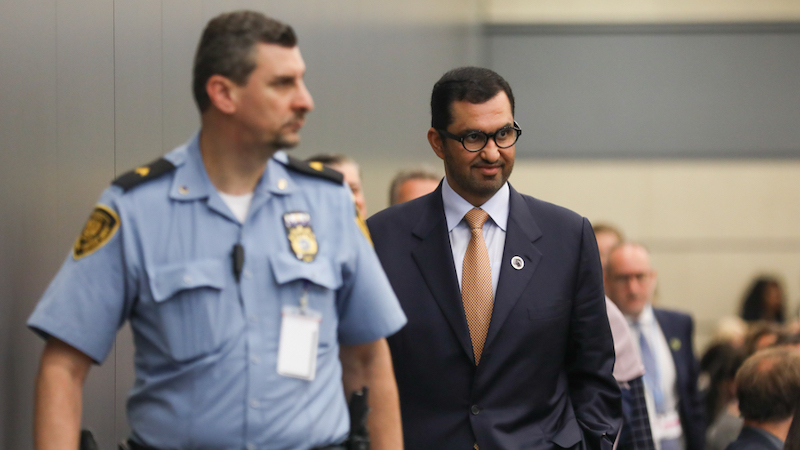Sultan Al Jaber urged governments to update their national climate targets by September. Not one heeded the call
In July, when Cop28 chief Sultan Al Jaber laid out his battle plan for the upcoming climate summit in Dubai, he issued a plea to all governments: raise your climate targets by September.
His appeal has gone totally unanswered. Two and a half months later no country has updated its nationally determined contribution (NDC), the Paris Agreement-mandated blueprint to reduce emissions and adapt to climate impacts.
The deafening silence comes as the UN restates the urgency of stepping up action. More ambitious targets are needed as current NDCs are not collectively sufficient to limit warming to 1.5C, the Global Stocktake report said last month.
Tom Evans, a policy advisor at E3G, says it was always “quite unlikely” countries would submit updated NDCs before Cop28. “I don’t think there are tonnes of appetite among governments to revise their targets so often,” he told Climate Home News. “It’s challenging politically because these aren’t light decisions, and it’s challenging technically as it takes time with lots of modelling to do them properly.”
Ambition gap
Current NDCs are short of what is needed. If countries meet their 2030 emission targets in full, global heating could only be limited to 2.4-2.6C this century, according to the UN Emissions Gap report. Emissions need to decline by 45% from 2010 levels by 2030 to meet the goals of the Paris Agreement, the Intergovernmental Panel on Climate Change said in its latest report.
NDCs are an integral part of the “ratchet mechanism” built into the agreement: each climate plan should be stronger and more ambitious than the one that is replacing. In 2015 governments agreed to update the documents every five years, but since then many have called for more frequent reviews.
What is the global stocktake of climate action and why does it matter?
Like with Al Jaber’s plea, they have mostly gone unheeded. At Cop26 in Glasgow, governments agreed to “revisit and strengthen” their 2030 emission targets so that they are aligned with the goals of the Paris Agreement by the end of 2022.
Only a handful of countries submitted new NDCs within that timeframe and, crucially, none of them produced one that is compatible with keeping global warming below 1.5°C, according to Climate Action Tracker.
Big emitters missing
“There is a bit of a deja vu”, says Mia Moisio, project lead at Climate Action Tracker, referring to Al Jaber’s call. “There is a clear sense of urgency in the scientific community but, unfortunately, that has not trickled down to decision-makers in the way we’d hope to see.”
Most of the world’s biggest polluters have not drafted new climate targets in years. European Union states last updated their NDCs in December 2020, the US, Canada, Japan and China did so in 2021. The UK submitted a new document in 2022, offering more transparency but no stronger targets.
New IEA net zero report leaves big polluters less room to hide
Mexico, one of the latest G20 nations to issue an update, has been accused of breaching the Paris Agreement’s commitment to step up targets over time. Its latest climate plan would lead to higher emission levels than the targets the Central American country had pledged in 2016.
Previously also accused of backsliding on commitments, Brazil announced two weeks ago it would go back to the stronger climate targets it drew up in 2015 while it works on new and improved ones.
E3G’s Evans said many governments are likely to be putting their efforts into preparing their new targets for 2035, which are due in two years’s time. “Despite the massive ambition gap, the focus is less on their current targ
Read More

